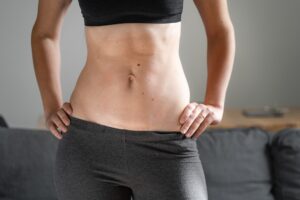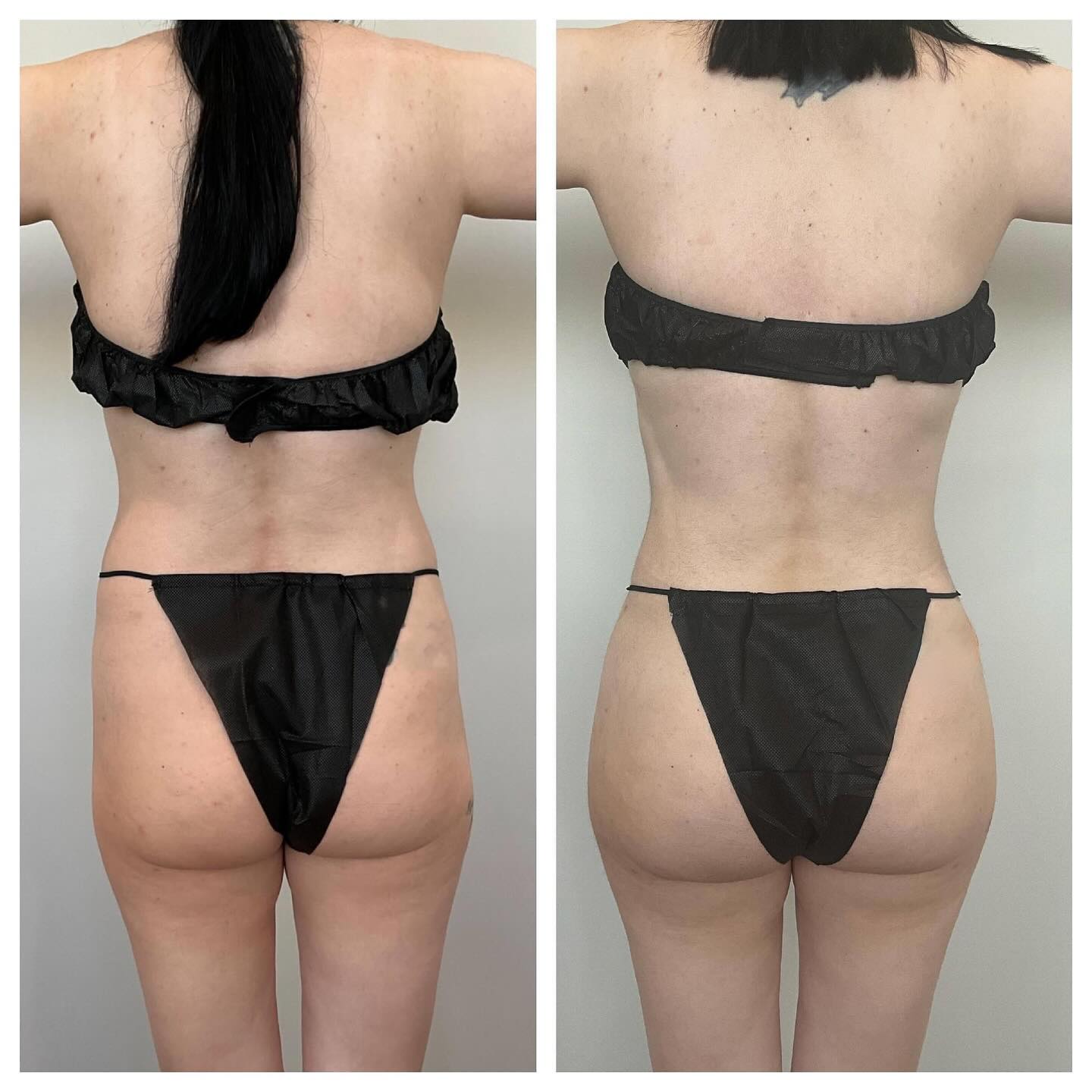
BodyLuxe
December 17, 2024

The recovery period following liposuction and Brazilian Butt Lift (BBL) surgery is a critical time that can shape the final outcome of the procedure. During this phase, patients often seek ways to enhance comfort, reduce swelling, and improve the contouring results they’ve invested so much time, effort, and money to achieve. One method that frequently comes into the spotlight is manual lymphatic drainage massage (MLD). While some surgeons and patients praise lymphatic drainage massage as a highly beneficial practice, others remain skeptical, questioning its necessity and even its safety. In addition, the role of post-surgical garments, such as the “faja,” and other non-massage interventions also factor into the discussion. In this article, we’ll explore what lymphatic drainage massage is, its purported benefits and potential downsides, and alternative ways to support recovery after liposuction and BBL surgery.
What is Manual Lymphatic Drainage (MLD)?
Manual lymphatic drainage is a specialized, gentle form of massage therapy aimed at stimulating the lymphatic system to improve the flow of lymph fluid. Unlike traditional deep-tissue or Swedish massage, lymphatic drainage employs light, rhythmic strokes designed specifically to encourage lymph fluid—rich in waste products, excess proteins, and cellular debris—to move out of affected tissues and toward lymph nodes and the circulatory system. When performed correctly, MLD can help reduce swelling (edema), alleviate discomfort, and potentially speed up the healing process.
Why Consider It After Liposuction and BBL?
Liposuction and BBL procedures typically involve removing or transferring fat, and this surgical manipulation inevitably leads to inflammation and swelling in treated areas. The body’s natural inflammatory response, coupled with the trauma of the surgery itself, can slow down recovery if not properly managed. For many patients, a build-up of fluids can manifest as stiffness, discomfort, prolonged bruising, and less-than-ideal contour. By gently guiding these fluids away from the surgical sites, lymphatic drainage massage may help reduce edema and improve overall comfort during the crucial healing phase.
Swelling Reduction: The primary goal of MLD is to address fluid accumulation that occurs after liposuction and BBL. With consistent sessions, many patients report a noticeable reduction in swelling and puffiness, allowing them to see their surgical results more clearly and sooner.
Enhanced Comfort and Mobility: Post-operative stiffness can be uncomfortable. By encouraging fluid movement, MLD can help alleviate that tight, swollen feeling. The gentle strokes can also soothe tender tissues, making it easier for patients to move around as they progress in their recovery.
Faster Recovery Timeline: Although individual healing times vary widely, some believe that regular lymphatic drainage massages can help shorten the recovery timeline. By facilitating the body’s natural waste removal processes, patients might experience less inflammation over time, potentially enabling them to return to their normal activities sooner.
Improved Skin Texture and Tissue Quality: MLD can support healthier circulation, which in turn may contribute to better tissue quality, improved scar healing, and more even skin texture. Over the long term, this can help refine the final aesthetic outcome.
Holistic Wellness Approach: Beyond its physical benefits, manual lymphatic drainage often offers a therapeutic, relaxing experience. The gentle, nurturing touch can relieve stress, reduce anxiety, and promote an overall sense of well-being, which is particularly valuable during the vulnerable post-operative period.
Anecdotal Success Stories and Case Studies:
Many patients and surgeons alike share positive experiences with MLD after cosmetic surgery. Patients frequently report quicker visible improvements in shape and definition, as well as a reduction in discomfort. Some plastic surgeons actively recommend MLD sessions as part of their post-op protocol, sharing that the treatment can make a tangible difference in how quickly patients see their results.
Growing Recognition Among Surgeons and Therapists:
Over the past few years, lymphatic drainage has gained broader acceptance. Trained massage therapists skilled in post-operative care often work closely with plastic surgeons, developing tailor-made protocols to optimize healing. Surgeons who advocate for MLD often cite improvements in patient satisfaction and a lower incidence of complications related to excessive swelling.
Support From the Lymphatic Research Community:
While more clinical research is needed, the fundamentals of MLD rest on sound physiologic principles: by encouraging the flow of lymph, we support one of the body’s natural healing and detoxification pathways. This logic resonates with many healthcare providers who value integrative approaches to patient care.
Insufficient Clinical Evidence:
Critics point out that while MLD is popular, rigorous scientific evidence proving its efficacy in the post-liposuction and BBL context is limited. Much of the support for MLD comes from anecdotal reports, surgeons’ personal preferences, and patients’ subjective experiences. In the absence of large, well-controlled clinical trials, some professionals hesitate to wholeheartedly endorse it.
Potential for Harm if Not Done Properly:
The technique is highly specialized. If performed by someone without proper training, MLD could cause more harm than good. Aggressive or improper massage might compromise healing incisions, disrupt fat grafts, or even trigger additional inflammation. For MLD to be beneficial, it must be performed by a therapist with expertise in post-surgical care, who understands the timing, pressure, and strokes necessary to avoid complications.
Added Expense and Time:
Undergoing multiple sessions of lymphatic drainage massage can be costly and time-consuming, especially since these sessions often extend over weeks or even months. Some patients question whether the added investment is worthwhile, particularly when weighing it against other equally beneficial post-op care measures that may not require professional intervention.
Compression Garments (Fajas):
The most common alternative—or complement—to MLD is wearing a compression garment, often referred to as a faja in the context of BBL and liposuction. A faja is a tightly fitted garment designed to provide even pressure on treated areas. By doing so, it can help reduce swelling, minimize fluid build-up, and assist the skin and tissues in adhering to their new contours. Many surgeons consider a high-quality faja worn diligently for several weeks post-op to be a cornerstone of successful recovery.
Benefits of Wearing a Faja:
Drawbacks of Relying Solely on a Faja:
At-Home Techniques and Self-Care:
For patients who are uncomfortable with or unable to afford professional MLD sessions, simple self-care practices can still promote lymphatic flow and healing. Gentle walking, adequate hydration, a balanced diet, and some carefully guided self-massage techniques (if approved by a surgeon) may all help support lymphatic function. Elevating treated areas and using cold compresses as recommended by a healthcare professional can also lessen swelling.
Innovative Recovery Tools:
In recent years, certain post-operative recovery tools have gained popularity. For instance, mild vibration platforms, infrared saunas, and specialized wraps aim to improve circulation and lymphatic flow. While these options vary widely in their evidence base, some patients find them helpful adjuncts to more traditional interventions.
Consider Your Surgeon’s Recommendations:
Every plastic surgeon will have their own set of guidelines for post-operative care based on their experience, patient outcomes, and familiarity with various interventions. Before making a decision about MLD, consult with your surgeon to understand why they might be for or against it. They may also provide referrals to trusted massage therapists or non-massage alternatives.
Assess Your Personal Comfort and Budget:
It’s essential to weigh the financial cost, time commitment, and logistical considerations of lymphatic drainage massage against the potential benefits. If you are leaning toward MLD, ensure that you locate a certified, experienced therapist who specializes in post-surgical care, as improper technique can negate potential advantages.
Think About Your Recovery Priorities:
Ask yourself what you most want out of the recovery process. Are you primarily concerned about reducing swelling as quickly as possible, or are you more interested in a low-maintenance approach? Perhaps you value relaxation and the holistic feel-good factor that MLD provides. Understanding your priorities will help you choose a path that aligns with your goals.
Gradual Trial and Adjustments:
If you’re uncertain, you may not have to commit to multiple MLD sessions right off the bat. Some patients opt to start with one or two sessions to see how their body responds. If they notice a genuine difference and find it worthwhile, they continue. If not, they can invest those resources elsewhere, such as upgrading their compression garment or exploring other supportive therapies.
The question of whether or not to include lymphatic drainage massage in your post-liposuction and BBL recovery plan is complex and multifaceted. On one hand, MLD promises to reduce swelling, enhance comfort, and potentially improve your final aesthetic outcome. It has a growing reputation among certain surgeons and clinics, and many patients swear by its benefits. On the other hand, the practice lacks robust scientific proof, may be costly, and, if performed by an inexperienced practitioner, can pose risks. Moreover, there are sensible alternatives—most notably, wearing a well-fitted compression garment (faja)—that can also achieve a reduction in swelling and facilitate healing.
For many patients, the best approach lies somewhere in the middle. They might wear a faja as directed by their surgeon and incorporate a few MLD sessions to see how it makes them feel. Others may find that simply following their surgeon’s instructions on compression, rest, and gentle movement is enough to achieve a pleasing outcome. Still others will lean into every tool at their disposal, including MLD, to get back to their routine as quickly and comfortably as possible.
Ultimately, your decision should be guided by a combination of professional medical advice, personal preference, and practical considerations. By educating yourself about the rationale behind lymphatic drainage massage, its pros and cons, and how it compares to alternatives like wearing a faja, you can make an informed choice. Your recovery journey is as individual as your body and your reasons for having surgery. Taking the time to understand your options is the first step toward ensuring that you achieve the best possible results from your liposuction and BBL experience.

Fat removal, Liposuction, BBL, Fat Transfers, and Body Contouring on Michigan Ave in downtown Chicago by Daniel J Farrugia MD PhD FACS
(312) 999-5505
John Hancock Center – 875 N Michigan Ave Ste 3620, Chicago, IL 60611
Summer Smash has landed, and BodyLuxe is here to help you greet the season with a sun‑kissed silhouette! Take up to $4,500 off our most‑loved procedures—FormSculpt Lipo, Brazilian Butt Lift, Fat Transfer (to Breasts or Hands), Skin Tightening, or a Mini Tummy Tuck—and step onto the beach or boat feeling unstoppable.
This limited‑time offer runs all summer long—June through August—and appointments are filling fast. Tap below to lock in your consultation and let BodyLuxe sculpt the look you’ll love showing off from the beach to every summer bash.